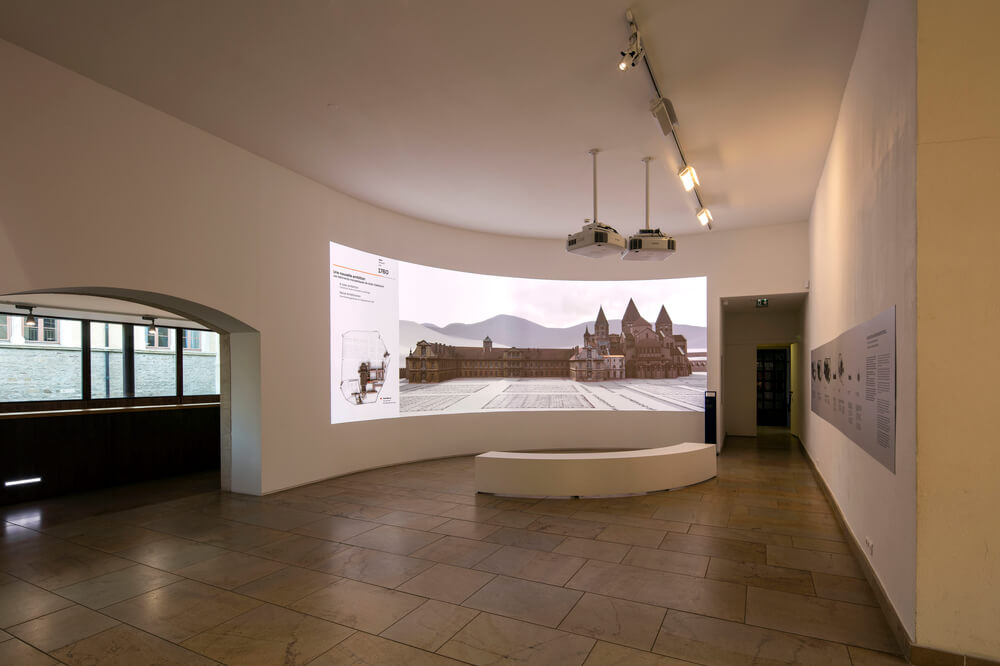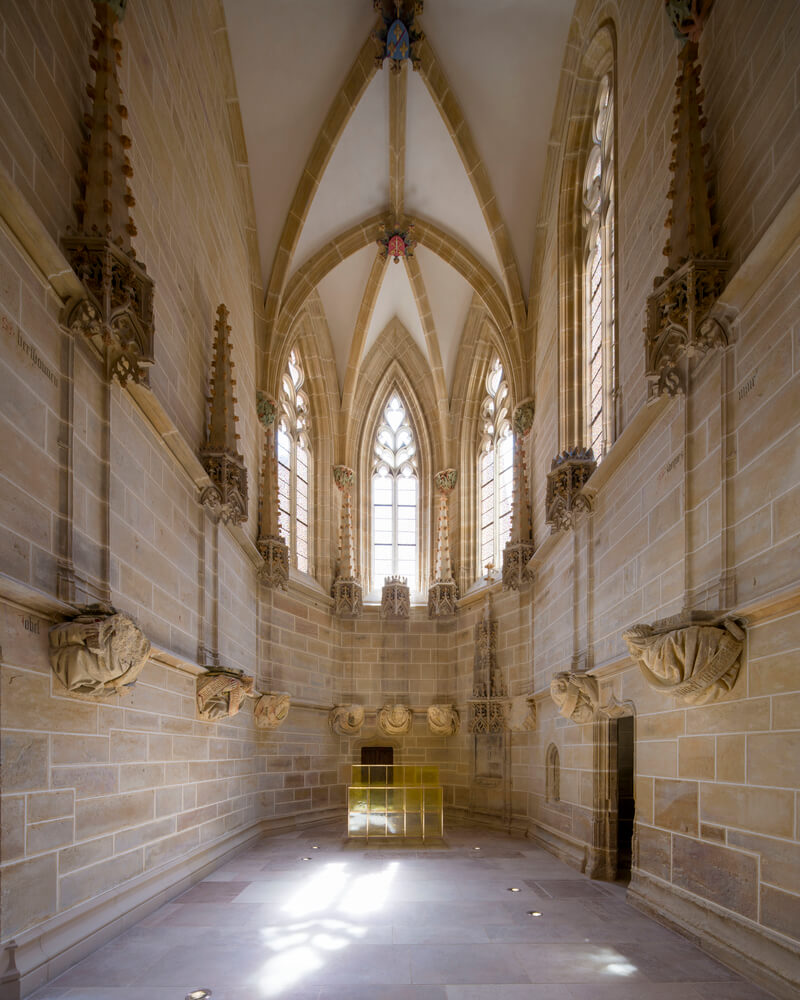This website uses cookies so that we can provide you with the best user experience possible. Cookie information is stored in your browser and performs functions such as recognising you when you return to our website and helping our team to understand which sections of the website you find most interesting and useful.
Abbey of Cluny



The EHL Site
The remains of Cluny Abbey give us an idea of the immensity of this Romanesque building. However, Cluny is not just about its church; it also encompasses a 15-hectare monastery, surrounded by walls and towers, some of which, like the Round Tower, are still visible today. Numerous sculpted remnants from the church and monastic village are on display at the museum of art and archaeology. A computer-generated imagery film introduces visitors to the abbey by showcasing the abbatial church in its former glory.
On September 11, 910, William, Duke of Aquitaine, Count of Mâcon and Burgundy, decided to donate his lands in Cluny to the holy apostles Peter and Paul, thus placing the abbey under the direct authority of the pope.
The abbey then expanded, and its community of monks significantly increased, necessitating the construction of larger abbatial churches. Following an initial building, a new abbatial church was constructed and consecrated with the relics of Saint Peter and Paul in 981 (Cluny II). In 1088, Hugh of Semur started the construction of a new, for the time colossal, abbatial church: the Maior Ecclesia. With its exceptional dimensions of 187 meters in length and more than 30 meters in height in the central nave, it was the largest church in Western Christendom until the reconstruction of Saint Peter’s in Rome in the 16th century. It symbolizes Cluny’s influence, which at the time had 800 priories throughout Europe.
Illustrious abbots led the abbey in the following centuries, including in the modern era Richelieu and Mazarin. However, nothing stopped the gradual decline of the powerful abbey, notably challenged from the 12th century by the new Cistercian order and subjected to the vicissitudes of successive wars. Around 1750, the abbey’s conventual buildings were rebuilt, still showcasing all the characteristics of the classical style today. The monks were expelled from the abbey, and the buildings were seized as national assets and sold in 1793 to stone merchants. The Maior Ecclesia was then dismantled over 25 years. It was not until 1844 that the abbey was classified as a historical monument. Since 1901, the National School of Arts and Crafts has been housed in the monastic buildings.
European dimension
From the 10th century, Cluny Abbey established a network that expanded throughout Europe during the Middle Ages. The Abbot of Cluny could reform monasteries under his jurisdiction. This network, the first of its kind in Europe, spread across France, Spain, Portugal, Italy, Germany, Switzerland, England, Poland, etc., making Cluny the head of 1,400 dependencies with about 10,000 monks. Cluny Abbey advocated for peace over its 1000 years, for instance, by establishing truce days across Europe. Constant connections between Cluniac sites ensured a shared identity throughout Europe. This network led to a renewal in medieval religious and cultural life, significantly influencing the development and character of modern Europe through its impact on the emergence and shaping of European cities and political harmony.
The organization
The Cluny Abbey is managed by the French Centre des Monuments Nationaux. The Centre is a French public institution in charge of administration, conservation, and restauration of monuments hold by the French state. The Centre operates under the French Ministry of Culture.
